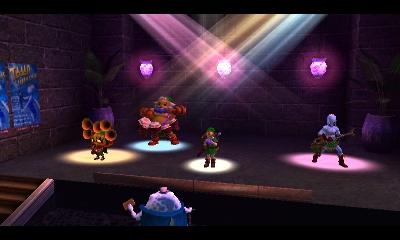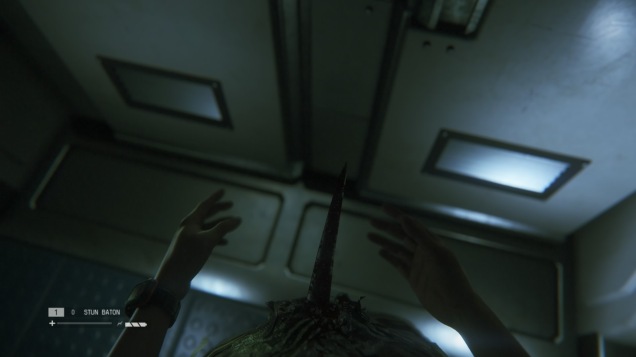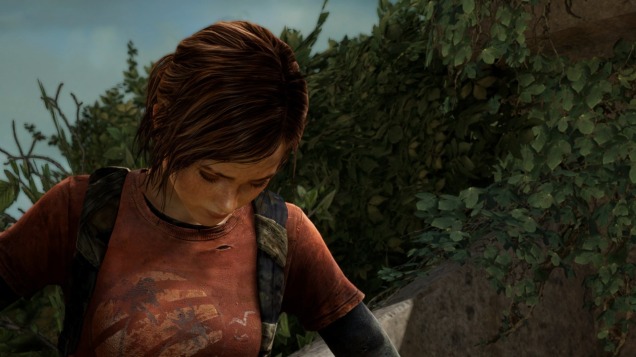All lyrics and music by blink-182, not me. Clearly.
Growing up, my mom was a big fan of heavy metal and grunge rock, while my dad mostly listened to country. I think there’s a degree to which we inherit tastes from our parents—like most things—so for a long time I listened to what they listened to. I didn’t strike out on my own into the musical world until I was 11 or 12. I could write countless pages about the countless hours I spent with a Walkman or a radio, mostly listening for something I recognized, until I started to recognize new songs, things I hadn’t inherited from anyone else. This was somewhere around 15 years ago now, but one thing I remember vividly is that my first actual favorite band ended up being blink-182.
I don’t remember the first time I heard them, or probably any of the earliest times. I know I heard of them long before I heard them; one day in 6th grade a lot of my classmates were giggling and making a general hullabaloo about the whole nudity thing. What ended up sticking with me was their music. I remember how catchy “What’s My Age Again?” was, and how I always listened to it on low volume or with headphones, because I knew my parents wouldn’t like the lyrics. I remember falling in love with their more serious-ish songs like “Dammit” and “Adam’s Song,” more catchy tunes with “The Rock Show” and “All the Small Things,” and mostly I remember how “Stay Together for the Kids” immediately became one of my favorite songs of all time.
Despite all this, I didn’t own any of their albums until I was in high school, when a friend burned me a copy of their untitled album. I knew “Feeling This” and “I Miss You” from the radio, and eventually I’d fall in love with the album as a whole. If I had to pick an album that was the most important to me in the formative years of my musical tastes, this would be it.
It didn’t take long before the infamous hiatus, and while I enjoyed both Angels & Airwaves and +44, none of their work meant as much to me as untitled did. Needless to say I was thrilled when the band reunited, and I love Neighborhoods for what it is. The second split didn’t hurt as badly, especially since it didn’t take long at all for the band to start playing shows with Matt Skiba in place of Tom DeLonge. I was never a huge fan of Alkaline Trio, though I did enjoy quite a few of their songs, but I’ve always loved Skiba’s voice, so this was exciting. It all paid off for me when the band released “Bored to Death.”
I pre-ordered California as soon as I was able to, and I’ve played little else since putting it on my iPod.

“Cynical” works as a fun opener, with Mark Hoppus dropping the band’s classic angst-ridden lyrics before being interrupted by Travis Barker’s famous drumming; the man is easily one of the best drummers of all time. Following is about a minute of (literally) unapologetic pop-punk, as Matt Skiba furiously belts out “What’s the point of saying sorry now? Not sorry, not sorry, not sorry, I’m not sorry.”
“Bored to Death” was a fantastic way to introduce the band’s new sound, with Skiba and Hoppus trading off verses and choruses.
Save your breath, I’m nearly
Bored to death and fading fast.
Life is too short to last long.
Back on Earth, I’m broken
Lost and cold and fading fast.
Life is too short to last long.—blink-182, “Bored to Death”
Hoppus takes over for a cleverly worded bridge, and then Travis Barker drives the song home. By now it’s clear that Matt Skiba is a good fit for the band. His voice doesn’t contrast with Hoppus’s as much as Tom DeLonge’s does, but his guitarwork is right at home for blink-182.
Track three, “She’s Out of Her Mind” is another piece of classic pop-punk, with a catchy pre-chorus declaring “She’s a-a-a-antisocial, a-a-a-she’s an angel.” In the second verse, Matt Skiba proves he can provide a more classic blink-sounding flat vocal style as well as his louder, more melodious singing. After this is “Los Angeles,” easily the darkest song on the album. Barker brings his hip-hop drum style while Mark Hoppus and Matt Skiba set each other up for vocals, tossing the song’s lines back and forth until Skiba takes over, leaving Hoppus to tunefully shout out some “ohs” that hit a spot most instruments wouldn’t do justice.
“Sober” provides an interesting contrast to “Los Angeles,” being far more light-hearted and playful. It’s catchy as hell, with a thick chorus of vocals shouting out some of the words to the pre-chorus sections. “I can do bad, and you can do better” is a good example of the kind of fun, simple, yet clever lines found throughout the record.
All 15 seconds of “Built This Pool” were released well before the album. It’s a joke song, and if I had to pick one track to cut, it would be this one. It’s cute and classic blink humor, but it’s the kind of thing that probably made a lot more sense in the studio than out, and for some reason just sticks out like a sore thumb. Maybe it’s that it’s the only track that doesn’t feature vocals from both singers, or just that the tone is off; it’s more of a joke than “Sober” and far too casual for the next track, “No Future.”
Speaking of: This one is fun. Barker’s drumming is on point, and while some of the lyrics are sort of mashed into their rhythm, this song has the perfect balance of playful and serious. The random bass note before the first chorus always catches my ear, and Skiba’s verse is insanely good; it’s not the best writing ever, but he pours his soul into singing these lines.
She said that it’s too late to try,
Someday I’ll smile and say goodbye.
Every night that you fight every demon in sight,
Sleeping on the floor.
Wide awake from the dream with a shake and a scream,
Hope for so much more.—blink-182, “No Future”
The song leads well into California‘s major ballad, “Home is Such a Lonely Place.” I’m a sucker for ballads, and this is a good one. Its surprisingly simple lyrics get the job done without trying too hard, with lines like “I hold on tight, but not enough to hold you back” and “Wish I could slow down time, but not enough to slow you down” reflecting the desire to keep someone close forever, but realizing they need their own space to grow and move.
“Kings of the Weekend” is probably my least favorite song on the album. I just don’t care for the lyrics, though musically it’s solid, in particular the riffs following each chorus. “Teenage Satellites” is one of the bigger-sounding songs, with the now-classic blink space theme going on. Hoppus smoothly cruises through the first verse and provides sturdy backing vocals throughout, while Skiba dominates the choruses and owns the second verse. I absolutely adore his voice, especially when he’s crooning lines like “Then you kissed me like a storm at sea / Like I’m the only one you’ll ever need.”
After this is “Left Alone,” which starts with more spacey-sounding keys before being taken over by a flowing, melodic guitar section and Barker’s intense drumming. This quickly became one of my favorite songs in blink history, let alone on this record. Hoppus and Skiba split the song 50-50 vocally, trading off lines of each verse. The pre-chorus finds Mark Hoppus frantically asking “Can you remember the last time” followed by a hardly-there Matt Skiba contributing a memory, and the whole thing comes off as a bittersweet mixture of fondness and frustration, boiling down to a simple question: “Are we halfway gone, or halfway there?”
Then the chorus explodes, with Matt Skiba belting out some of the heaviest, loudest, most intense singing I’ve ever heard from him. It sounds like nothing the band has done, yet an entirely natural progression from their untitled and Neighborhoods eras. Lines like “Break me down, I’m not afraid of you” become album highlights.
“Rabbit Hole” was the second full song released, and is much faster than “Bored to Death.” It’s a fun tune, with Skiba’s verse lyrically playing with Hoppus’s, a simple and catchy chorus of “I won’t fall down the fucking rabbit hole,” and a great vocal chorus for the outro.
“San Diego” tones things down, beginning slowly with Mark Hoppus reminiscing, clearly about the band’s past. Oddly enough, Matt Skiba sings a majority of the song, but his voice fits the tone perfectly, keeping the song from sounding bitter or too serious. The bridge is one of the best moments on the record, and I’d be interested to know who wrote it, as it’s one of two moments on the whole album that sound more at home with Alkaline Trio than blink-182 (and I don’t mean this in a bad way).
I never needed to hear
All of the pain and the fear
Your secrets filled up my ears like the ocean blue.
I never wanted to know
How deep these cuts on you go
And like a river they flow to the ocean blue.—blink-182, “San Diego”
“The Only Thing That Matters” is one of the fastest songs on the album, and among the most playful. It’s classic blink through and through, except the second verse, which is the second moment that, to me, smacks of Alkaline Trio, but with the casualness of blink-182.
“California” closes the album as the last full song. Matt Skiba is mostly in the background for this one, which is a softer, ballad-y tune covering the ups and downs of modern day California. It’s one that hits close to home for me, because I was born there, lived there for years, and visited several times. Barker’s drumming is clever as ever, but quiet, along with Skiba’s guitars, letting Mark Hoppus’s vocals take control of the tune.
Two little kids out on the lawn,
Once we had love, now it’s gone
Good things haven’t happened yet
I’m empty as a movie set,
It’s what I’ve always wanted.—blink-182, “California”
The song slowly escalates toward the final chorus, where the trio play and sing their hearts out, bringing the album to a fitting close, if you don’t count the next joke song, “Brohemian Rhapsody,” which would’ve been better off as a hidden track. After the first listen, there isn’t much worth going back for, except maybe Skiba’s epic lead guitarwork.
California is a good record for introducing the band’s new sound. It’s not going to oust the untitled album as my favorite, but there are some unforgettable tracks here. Good luck getting me to ever shut up about how much I love “Left Alone.” It’ll be interesting to see where the band goes from here—these three re-inventing themselves with a more serious sound à la the untitled record would be a welcome direction, and it might be fun to see the band move on as a four-piece with Tom DeLonge back in the mix, if even just for a song or two. Whatever the case, this band has a lot of history, for me and in general, and I’m excited to hear what happens next.















